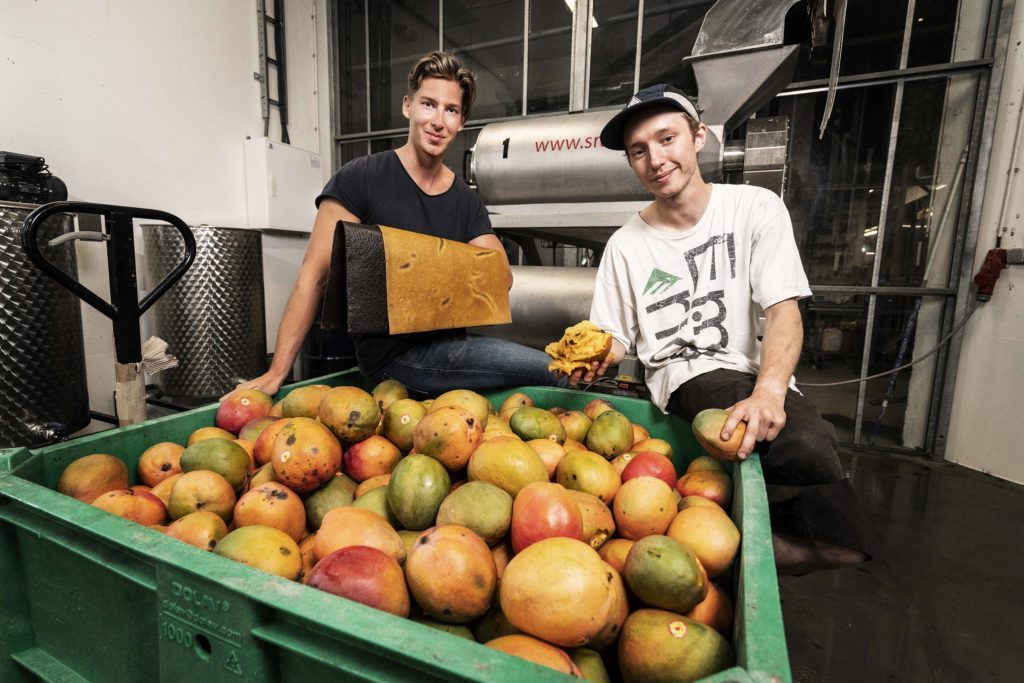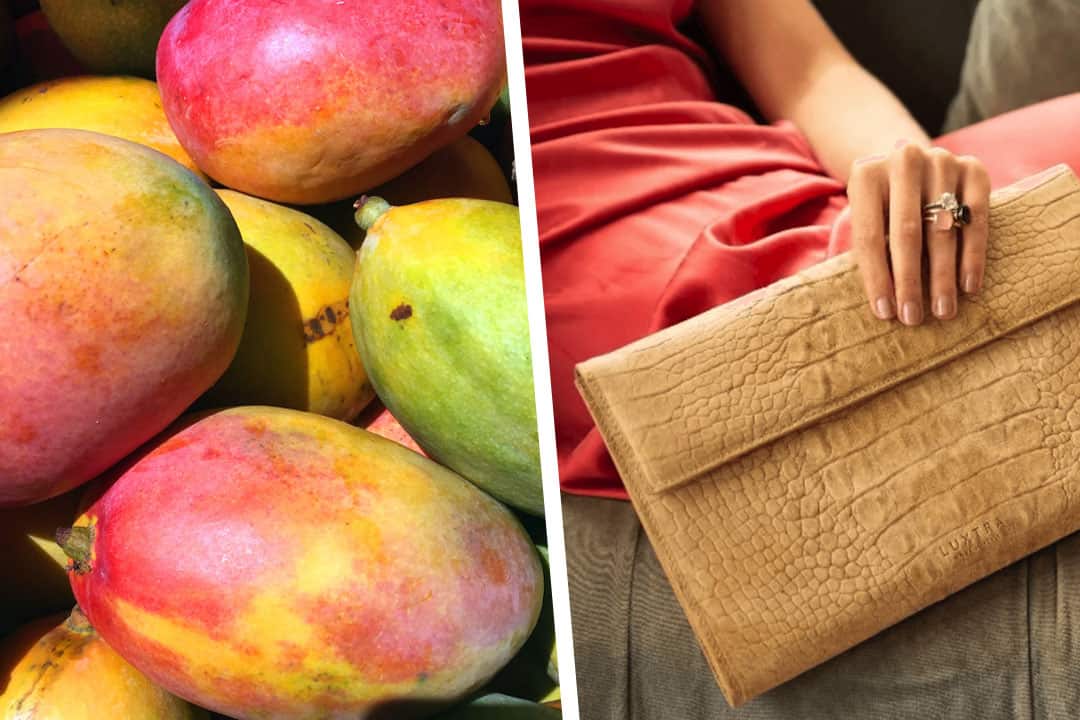The high-quality leather we adore in our high-end shoes and bags comes with a cost that is paid by mother nature. We all know that leather is a byproduct of animal skins, that itself says how many animals are sacrificed to put that fancy leather jacket on the shelf. Despite this, the leather industry around the world is massive, with a very high scale of both production and demand. But is there a sustainable approach to this, something that doesn’t hurt our ecosystem?
Fruitleather, a Dutch company in the Netherlands, has developed a method of creating vegan leather using mangoes that would otherwise have been thrown away.
The company collects around 1500 mangoes every week, from a Dutch importer. “It’s a win-win, as we receive waste from them for free, and they don’t have to pay any more to get rid of their mango waste”, says Koen Meerkerk, cofounder of Fruitleather.

The process starts with a machine de-stoning the mangoes and then crushing the fruit into a pulp. Then the mixture, pumping through a tube, reaches a large vat. Here, Hugo, another co-founder of the company, mixes the additives that will change the mixture into a leather-like material. He constantly keeps checking the measurements of the additives through a meter, which tells them what’s more and what’s less.
Once the perfect mixture is ready, it is poured and spread evenly on a metal baking tray and smooth out for an even thickness. The trays then go into a dehydrator for the night. After getting dried, what they get is a leather-like material that is darker. “Before we dry it, it always has a light cream colour. But after we dry it, it looks very different based on the type of mango that we use. For instance, a Palmer mango will give a more brownish material. Keitt mango will give more black material”, said Hugo.
The sheets are then finally sent to a leather finishing facility where they get goated in a protective glaze.
Hugo de Boon and Koen Meerkerk first got the idea of Fruitleather back in 2015. As Koen said, “We wanted to turn something valueless into something that has value”. “Eventually, with a lot of experimenting, we came up with the material that we have today”, added Hugo. For now, they are just aiming to make leather production easier on the environment, one mango at a time.
Tazeen Ansari

